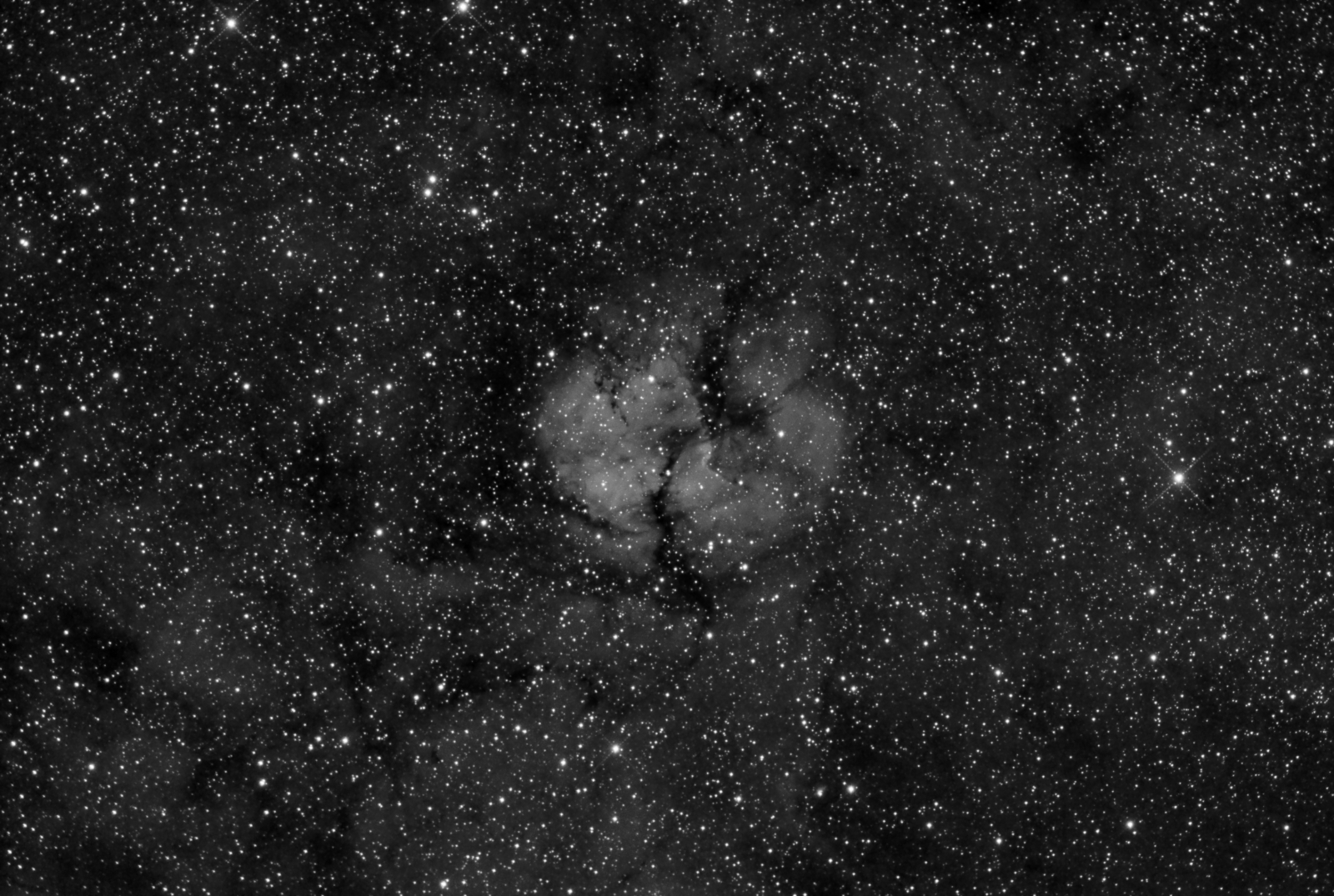Sh2-124 Emission Nebula (H-alpha)
 Click image for full size version
Click image for full size version
June 3, 2015
Sh2-124 is a member of the Sharpless catalogue of nebulae. It lies in northern Cygnus, and is around 8, 500 light years away. It doesn’t seem to be imaged very often, and I was not able to find much additional information about it. Sure is pretty though. Almost look like it is being split apart.
I use a deep red H-alpha filter when I image red objects, especially emission nebulae like Sh2-124. This filter lets through a very narrow range of wavelengths of red light. I can combine this filter’s data with the light I acquire through red, green and blue filters to really make the red structures pop. However, black and white images made using an H-alpha filter are beautiful in their own right. Stars tend to be smaller, and faint nebulosity shows really well. Details seem to stand out more in black and white than in colour images. Some people prefer these H-alpha images to colour pictures, in fact I have friends who don’t bother much with colour at all. Personally, I like colour images, but I do love the detail in H-alpha images. I have also posted a colour picture of this object.
Tekkies:
SBIG STL-11000M camera, Baader Ha filter, 10″ f/6.8 ASA astrograph, Paramount MX. Guided with STL-11000’s external guider and 80 mm f/6 Stellar-Vue refractor. Acquisition and guiding with TheSkyX. Focusing with FocusMax. Automation with CCDCommander. Calibration, cosmetic correction, registration, integration and all processing in PixInsight. Shot from my SkyShed in Guelph, Ontario. Nearly full Moon, good to very good transparency and good to very good seeing throughout acquisition.
26x20m Ha unbinned frames (total=8hr40m).
Linear Processing:
Background neutralization: DBE was applied to neutralize the background.
Deconvolution: A copy of the image was stretched to use as a deconvolution mask. A star mask was made from the unstretched master to use as a local deringing support. An external PSF was made from about 20 stars. Deconvolution was applied (50 iterations, regularized Richardson-Lucy, external PSF; local deringing at 70% and no global deringing at 0.03).
Noise Reduction: MultiscaleLinearTransform was used to reduce noise in the background.
Stretching: HistogramTransformation was applied to make a pleasing yet bright image.
Nonlinear Processing
Noise Reduction: ACDNR was applied mostly to background areas.
Stretching: HistogramTransformation was applied to reset the black point. LocalHistogramEqualization was applied to the brighter parts of the nebula. ExponentialTransformation was applied to the fainter parts of the nebula. UnsharpMask was applied to the brightest parts of the nebula. The DarkStructureEnhance script was applied with default settings except a strength of 0.2. A curve was applied to increase contrast.
Image scale is about 1.1 arcsec per pixel for this camera / telescope combination.






Leave A Comment